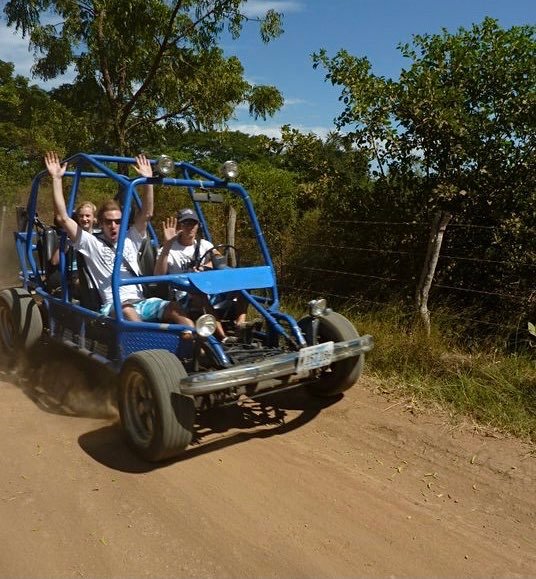Volkswagen Beetle
The Volkswagen Beetle is possibly the most iconic vehicle of the 20th century. It is also remarkably amendable to becoming a dune buggy: the engine is famously located in the rear of the vehicle, finding parts is trivial, and, due to its age, the electrical system is extremely simple.
When I moved to Nicaragua in elementary school, my dad promised me that we would build a dune buggy together. My dad to make good on his promise, and in 2006 he bought a mid-1960’s Beetle for about $500 USD.
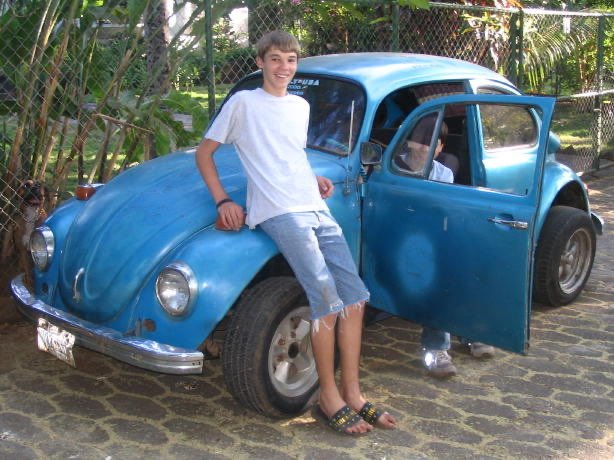
The unmodified VW Beetle in 2006.
Construction
As soon as we had our hands on the vehicle, we set upon it with grinders and cutting wheels and acetylene torches, extracting the body from the chassis. We also had to cut out the floor pans, as they had rusted through. Luckily the central stiffening tube was still solid.

The beetle with the body removed, exposing the chassis. In the middle of the frame, the gear shift and handbrake extend out of the center tube.
After taking the vehicle apart, the project lost momentum. I was eager to see it happen, but still too young to be much help when reassembling the vehicle. It wasn’t until 2010, almost 4 years later, that things started moving again. The first thing I did was rebuild the engine. It had been exposed to the elements the whole time, so everything needed to be checked or replaced. I got a lot of help from a mechanic to make sure this was done right.
I don’t have any pictures of the engine rebuild, but a great resource for learning about four-stroke engines is Bartosz Ciechanowski’s blog post about Internal Combustion Engines. The interactive 3D models in that post are similar to the Volkswagen engine and the principals are identical.

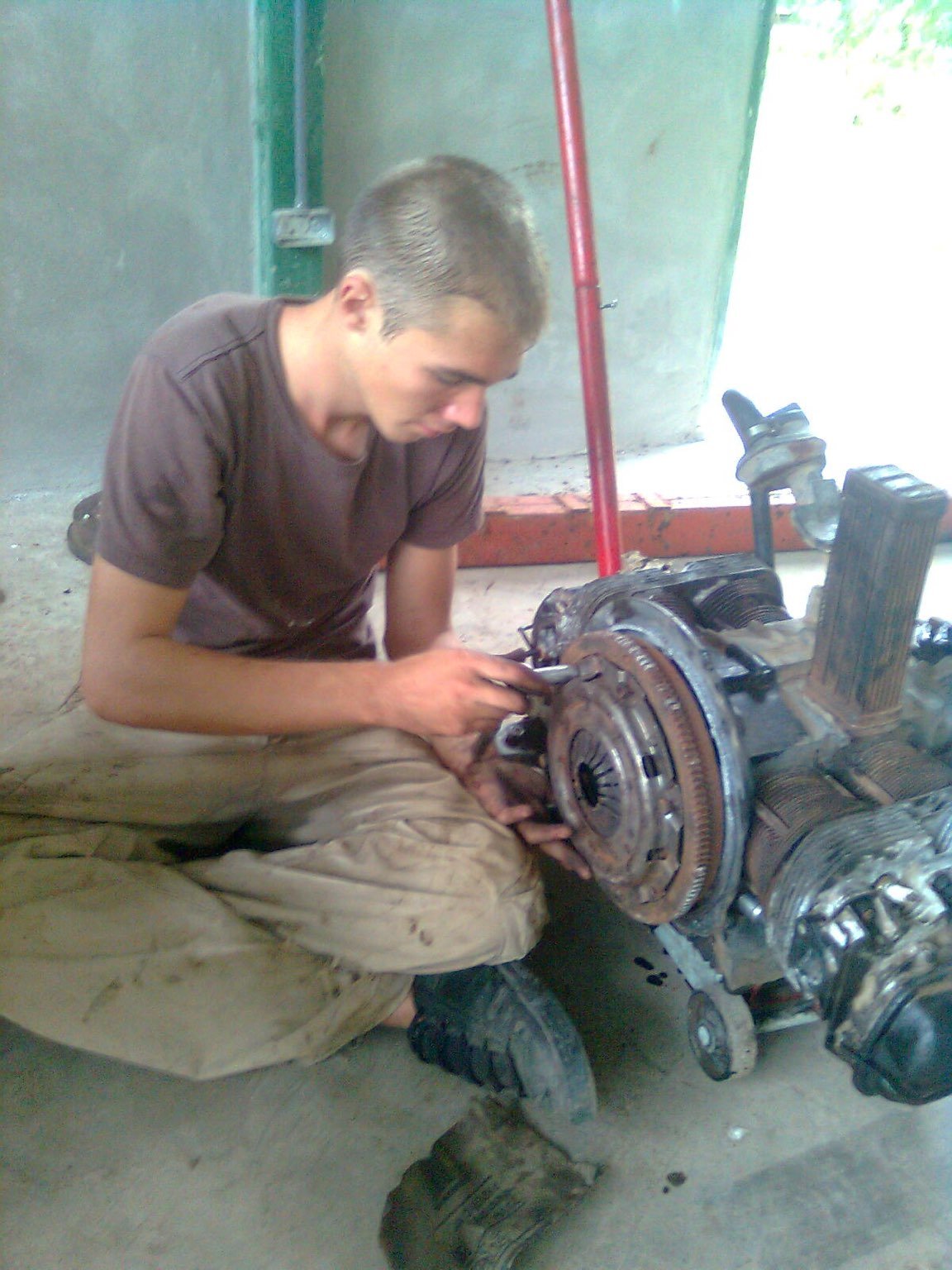
Inspecting the clutch before mounting the engine back onto the transmission.
As I was still in high school, at some point my dad contracted some people to help out with the rest of the build, especially the frame. I continued to help out at the shop whenever I had the chance, and over the next months the dune buggy emerged.
Album
In the end, the dune buggy turned out pretty cool! Thanks to its light body and rear wheel drive, it was great for drifting and ripping holes in the baseball field. I also drove it to school throughout high school. If my hair was wet when rushing out the door, I was sure to have very windswept look that day. I’ve included the images I could find of the finished dune buggy.
At some point I made a short video and posted it on youtube, although the resolution is pretty poor by today’s standards. Notice the lack of ABS in the first few frames. Also missing: power steering and a windshield.

My sister learning to drive. Teaching her in this indestructible vehicle is how my dad recuperated his investment.
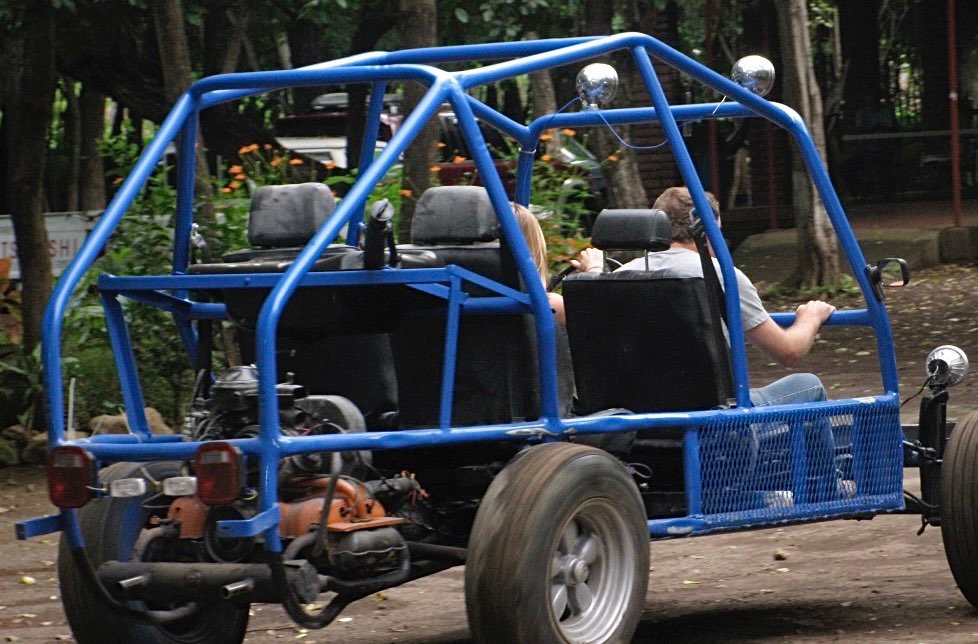
The dune buggy from another angle. Diagnosing engine issues was only a matter of walking around to the back.
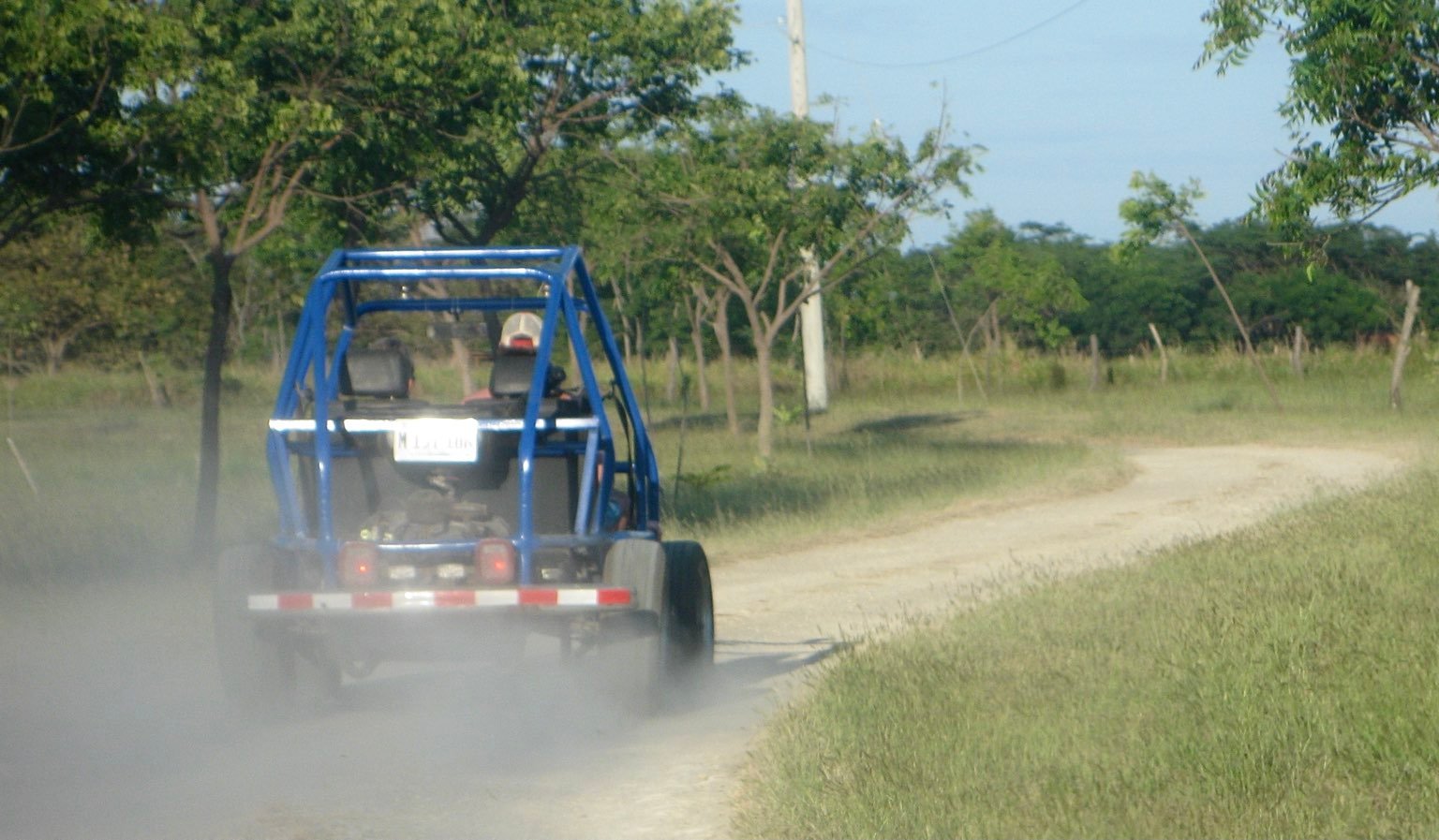
The best place to drive it was on the unpaved back roads going down to the beach. Lots of nice hills and curves, with the occasional mud puddle.
